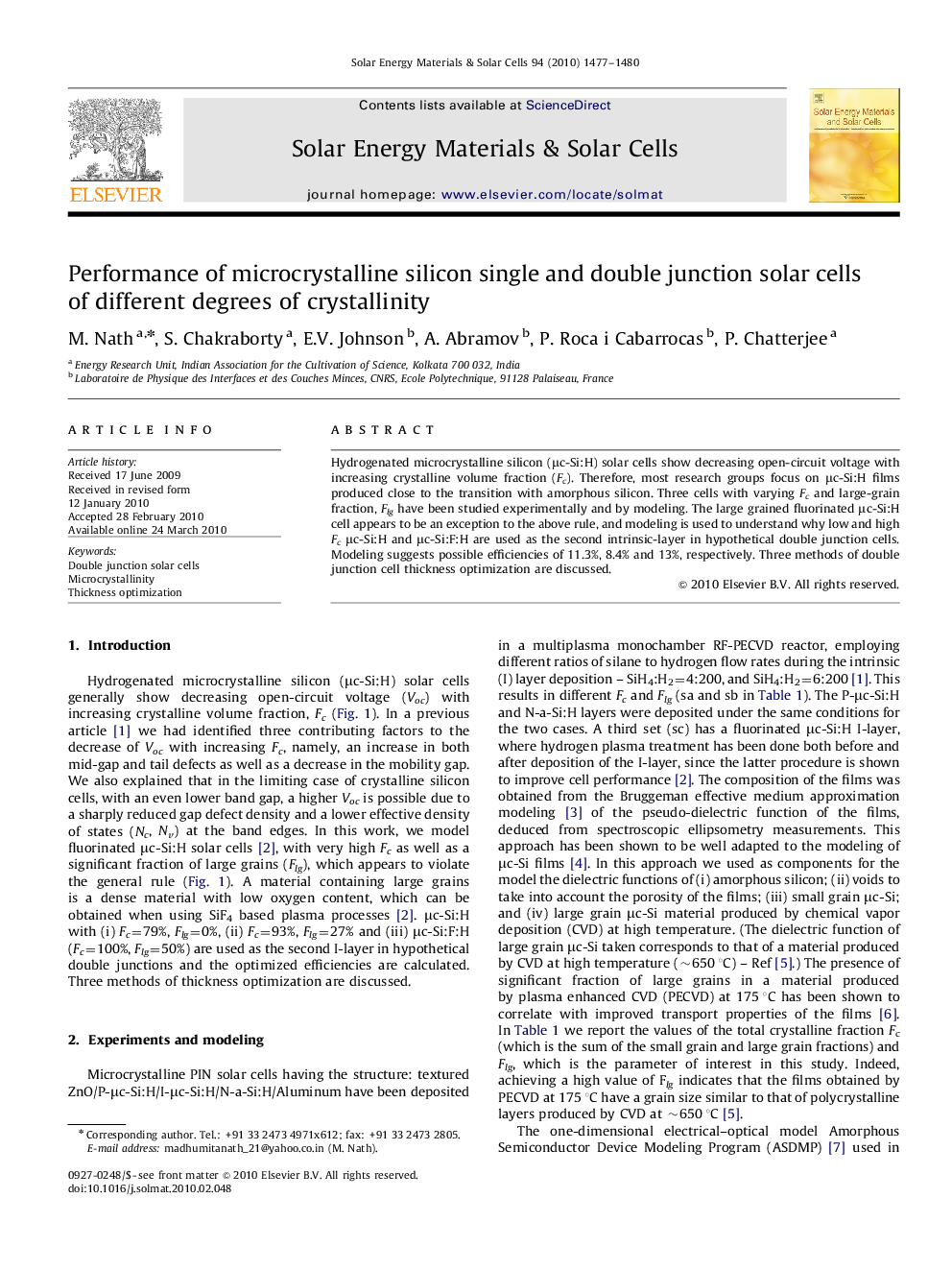| Article ID | Journal | Published Year | Pages | File Type |
|---|---|---|---|---|
| 79327 | Solar Energy Materials and Solar Cells | 2010 | 4 Pages |
Hydrogenated microcrystalline silicon (μc-Si:H) solar cells show decreasing open-circuit voltage with increasing crystalline volume fraction (Fc). Therefore, most research groups focus on μc-Si:H films produced close to the transition with amorphous silicon. Three cells with varying Fc and large-grain fraction, Flg have been studied experimentally and by modeling. The large grained fluorinated μc-Si:H cell appears to be an exception to the above rule, and modeling is used to understand why low and high Fc μc-Si:H and μc-Si:F:H are used as the second intrinsic-layer in hypothetical double junction cells. Modeling suggests possible efficiencies of 11.3%, 8.4% and 13%, respectively. Three methods of double junction cell thickness optimization are discussed.
